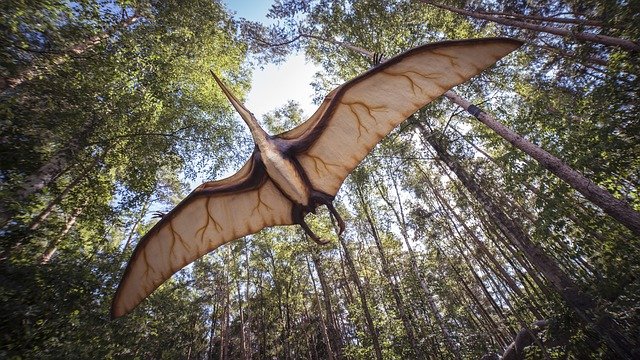Carbon dioxide concerns are not a new problem: the dinosaurs were worried too
These days, we students might only move from our beds to our desks and back; possibly venturing outside if we are feeling brave. Imagine walking 10,000 kilometres to a new home. This is exactly what dinosaurs did over 200 million years ago.
The Sauropodomorphs – long-necked herbivores – were around during the Triassic period, which spanned 50 million years. You may be familiar with the diplodocus; a popular early type of Sauropodomorph.
Sauropodomorphs moved to Greenland 16 million years after they first set foot on planet Earth. You would think they could have walked across Pangea – the supercontinent of the dinosaur era – whenever they fancied; so why didn’t they? New research has pinpointed when and why this move was possible.
The early Triassic period was around 250 million years ago. At this time, dinosaurs experienced extremely high CO2 levels in the atmosphere. The dinosaurs contended with 4,000 parts per million of CO2 in their atmosphere. For perspective, CO2 levels today are 415 parts per million.
For herbivores, food had to be found in the right conditions as they needed leafy vegetation to survive
These high levels of CO2 had drastic consequences for the planet. It caused an extreme climate with great weather fluctuations. There were many hyper-arid deserts – deserts severely lacking water. These climates were harsher for herbivores. Morgan Schaller (a geochemist at Rensselaer Polytechnic Institute in Troy, N.Y.) commented that this was why “meat-eaters roamed freely”. For herbivores, food had to be found in the right conditions as they needed leafy vegetation to survive.
The worst of the landscape was in the North and served as a barrier to Greenland against the Sauropodomorphs. Initially, they were prevented from travelling too far because the climate was so unforgiving. The best place for herbivores to live at that time was around Northern Argentina and Southern Brazil, where the climate was much friendlier due to being closer to the equator. This was around 230 million years ago – right in the middle of the Triassic era.
However, this seemed to all change with Sauropodomorph bodies being discovered in Greenland having lived there 214 million years ago.
Scientists recently measured the magnetic patterns in ancient rocks from South America, Arizona, New Jersey, Europe, and Greenland; each places Sauropodomorph fossils have been discovered. These patterns show the direction of the Earth’s magnetic field when the rocks were formed. This told scientists the Sauropodomorphs travelled Northwards during the Triassic era.
The scientists compared the observations of the Sauropodomorph rocks with previously dated rocks to discover that the Sauropodomorphs were in Greenland 214 million years ago. Therefore, the move was a slow one, being 16-million-years in the making. It should have taken 20 years to get to Greenland as dinosaurs travelled one or two kilometres per day. So what was the hold-up?
Scientists have reported that a sudden drop in CO2 was the reason the Sauropodomorphs finally started to move further. Previously dangerous passages were now clear for dinosaurs to roam. Thus, enabling the long trek to Greenland.
The CO2 levels in the late Triassic period is said to have dropped to around 2000 parts per unit from the start of the Triassic period. This meant that the climate would have been less arid and the wetlands drier, making the route to Greenland suddenly hospitable. This drop correlates with the move of the dinosaurs. It is likely that after this, the Sauropodomorphs discovered that the further North they travelled, the better the environment was to live in.
The cause of the drop in CO2 still eludes scientists today. It is therefore likely that one day this field will bring further discoveries.
Steve Brusatte, a palaeontologist at the University of Edinburgh commenting on the study, agrees that: “This study reminds us that we can’t understand evolution without understanding climate and environment.” Perhaps the more we know about dinosaurs, the more we can learn about our planet today.
This ground-breaking discovery is only the latest research of the much-loved topic of dinosaurs. There is so much yet to find, and it might help solve some of Earth’s recent climate problems.
The next time you are tired after a long day, remember the Sauropodomorphs walked 10,000 kilometres across Pangea
The next time you are tired after a long day, remember the Sauropodomorphs walked 10,000 kilometres across Pangea. If you take anything from this article, take the fact that climate change is affecting our planet today. The Sauropodomorphs moved gradually across the continent. Let us move gradually toward a better planet for future generations by taking care of the Earth whilst we are on it.
If you made it here, remember the Sauropodomorphs, even if only to impress your friends when you see them in person again. Dinosaurs were around for millions of years, and there is much to be learned from them. We humans have spent 0.1% of the time that dinosaurs have on the planet, let us try to at least achieve their legendary timespan.

Comments